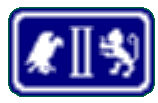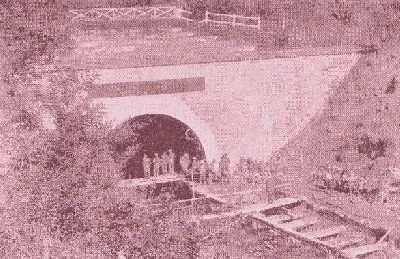The Story of the American Expeditionary Forces |

|
II CORPSIN THECAPTURE OF THE ST. QUENTIN CANAL |

The St. Quentin Canal

|
The operation to outflank the German positions along the Somme began on August 21. Byng's Army attacked north of the Somme on a front of about nine miles. In a few hours, he had captured the enemy's main line of resistance along the Albert-An-as Railway. The following day, that part of Rawlinson's Army that was north of the Somme forced the passage of the Ancre and captured Albert. The British offensive was henceforth to be one of the major blows in the series which Marshal Foch was preparing to drive the enemy back across the Rhine. On August 22, Marshal Haig issued instructions to his army commanders in which he stated:
 Damage in the Somme SectorLocate the Sector on a Map of the Western Front.With a wider purpose, the battle continued. On August 23, the main operation opened with a series of strong assaults on a front of over thirty miles, from Chaulnes to the vicinity of An-as. Under continued pressure, the enemy drew back to the line of the Somme. On August 29. Bapaume fell to the British, and Noyon to the French. On September 1, the Australians captured Peronne; and on September 2, the Canadians broke the Drocourt-Queant switch line and captured the maze of trenches at the junction of that line with the Hindenburg system. These important successes, in conjunction with the further advance of Humbert's French Third Army north and east of Noyon. forced the Germans to evacuate the line of the Somme and the Canal du Nord. By a series of local attacks, carried out in the second and third weeks of September, the British Armies of Home, Byng. and Rawlinson secured the remainder of the positions required for an attack on the main defenses of the Hindenburg Line. The line of resistance of the Hindenburg position ran mostly east of the St-Quentin Canal: but south of Vendhuile. for a distance of about 8.000 yards, the canal ran through a tunnel in which the Germans had anchored barges that furnished living accommodations for large numbers of troops. Leading out from the tunnel to the surface were numerous passages which provided ready exit to positions east and west of the canal. At the tunnel sector, the main German defenses were west of the canal. These defenses consisted of two strongly organized and heavily-wired lines of continuous trenches: the first was 1.000 yards distant from the canal: the second, 2.000 yards distant. To this tunnel sector came the American II Corps, with the American 27th and 30th Divisions, for participation in the assault on the Hindenburg Line, planned for September 29. Its mission was to lead the attack on the front of the Australian Corps, break through the German positions. and cross the canal.
Fighting was in progress all the way from the North Sea to Switzerland: it was naturally more intense wherever the Allies applied the greatest pressure. There was no doubt that pressure was being strongly applied in the zone of action assigned to the American II Corps. Rawlinson's British Fourth Army, of which the American II Corps formed a part, was to deliver the main blow in its assigned zone. On the night of September 23/24, the American 30th Division of the II Corps entered that part of the line situated just west of Bellicourt. and took over a front of some 3.800 yards, about 1,000 yards west of the Hindenburg Line, where the canal was mostly underground. On the following night, the American 27th Division entered the line north of our 30th Division, and took over a front of about 4.500 yards. Their assigned objectives were: for the 30th Division, Bellicourt; for the 27th. Bony. Both Bellicourt and Bony were strongly fortified.  US Manned British Tank |
|
Sources and thanks: Compiled by the Editor from American Armies and Battlefields in Europe. Regular contributors Ray Mentzer and Herb Stickel provided the Photos. MH |
To find other Doughboy Features visit our |
Membership Information  Click on Icon |
For further information on the events of 1914-1918
visit the homepage of |
Michael E. Hanlon (medwardh@hotmail.com) regarding content,
or toMike Iavarone (mikei01@execpc.com) regarding form and function.
Original artwork & copy; © 1998-2000, The Great War Society
